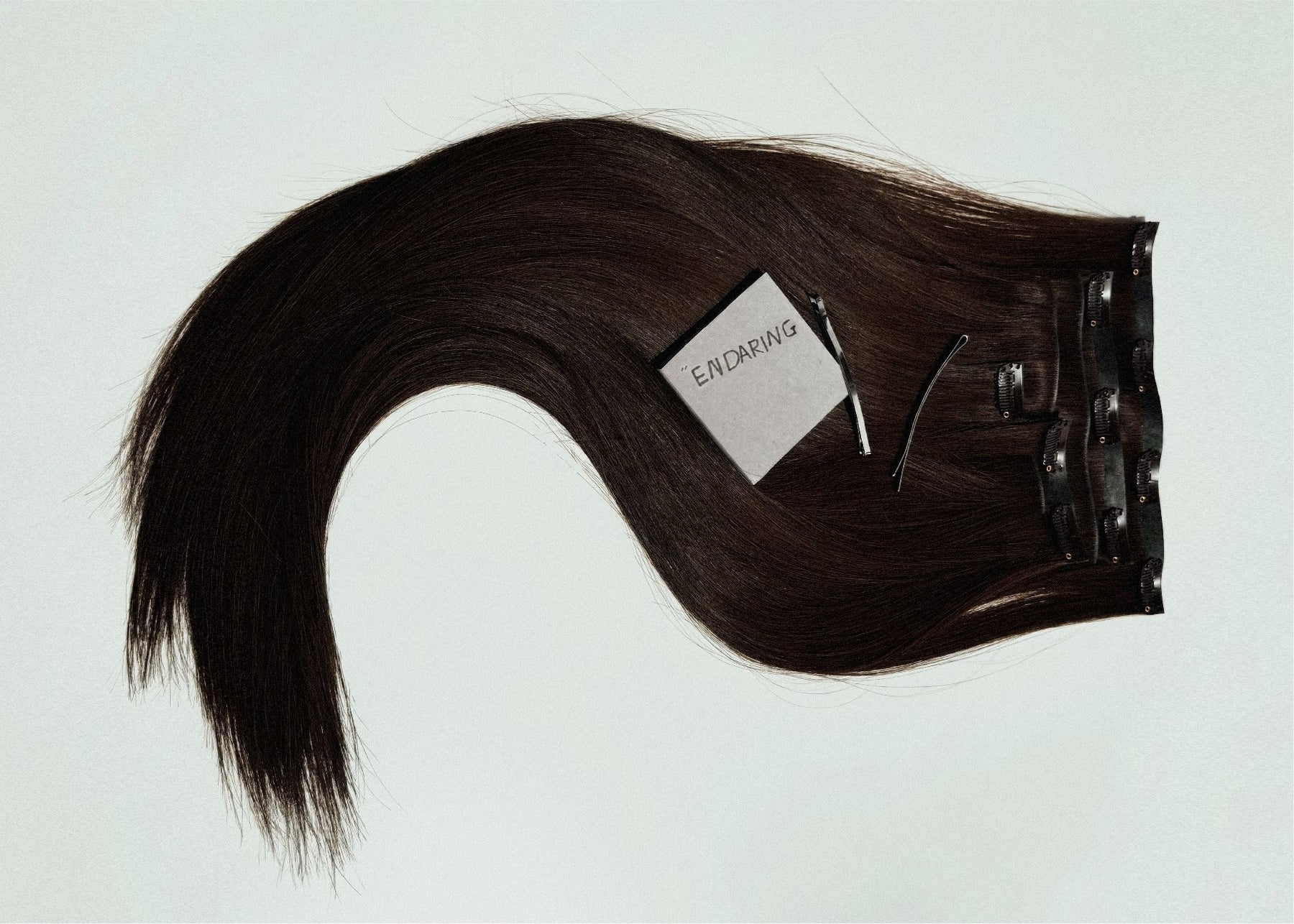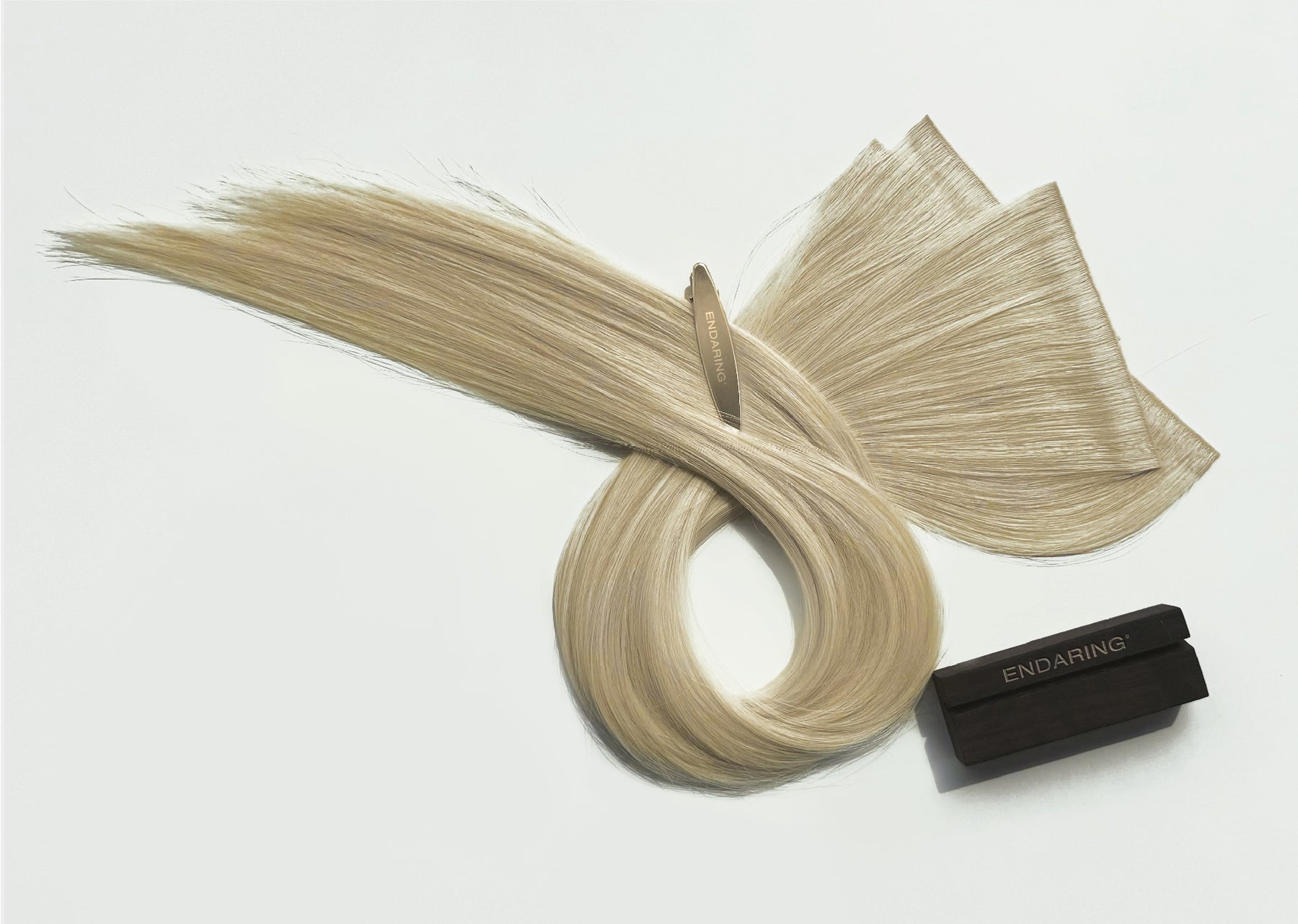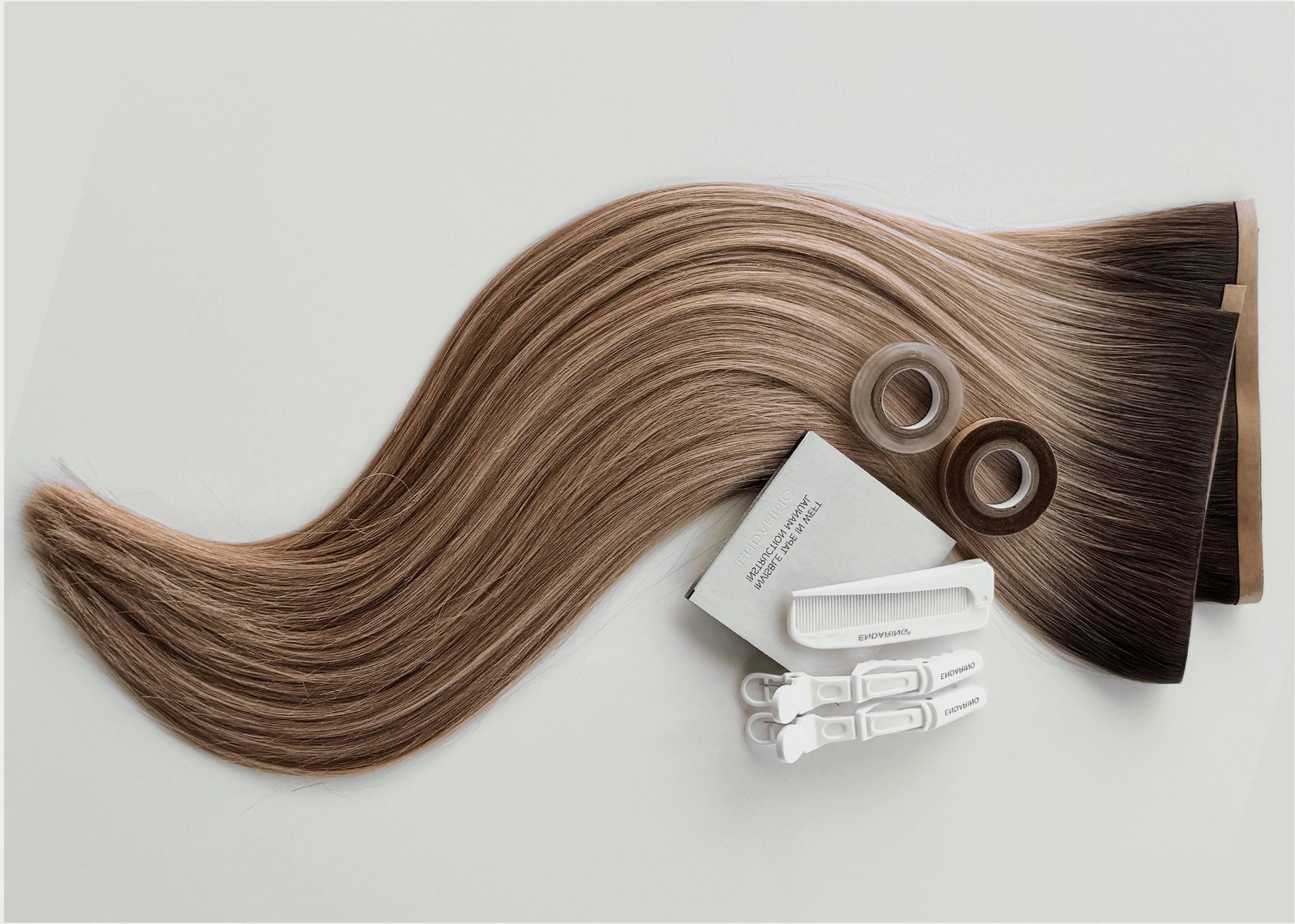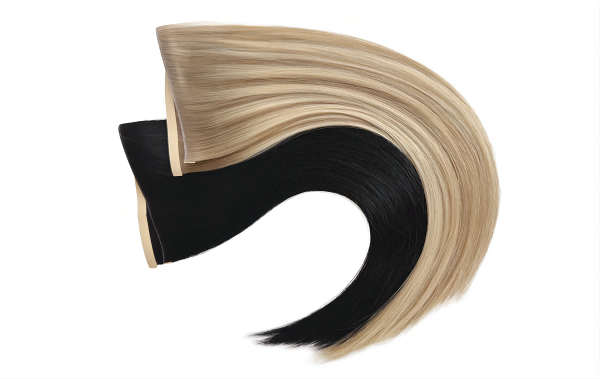Washing your hair with tape-ins can be tricky, but don’t worry, I've got your back. Let’s dive into this haircare adventure together.
- Why Proper Washing Matters for Tape-In Extensions
Proper washing is crucial for maintaining the longevity and appearance of your tape-in extensions. Tape-in extensions have adhered to your natural hair with adhesive tape, which can weaken if exposed to harsh chemicals or excessive moisture. Understanding the importance of washing them correctly helps prevent slippage, tangling, and damage to both the extensions and your natural hair. Proper washing also ensures that the extensions blend seamlessly with your natural hair, keeping them looking fresh and natural. Neglecting proper washing techniques can lead to a buildup of oils and products, which can compromise the integrity of the adhesive and shorten the lifespan of your extensions.
- Choosing the Right Shampoo and Conditioner for Tape-In Extensions
Selecting the appropriate shampoo and conditioner is vital when you have tape-in extensions. Regular hair products often contain sulfates and alcohol, which can strip natural oils and weaken the adhesive bonds. Opt for sulfate-free and alcohol-free products to maintain the strength of the tape. Look for shampoos and conditioners specifically formulated for hair extensions, as these products are designed to be gentle on the adhesive and provide the necessary moisture and nutrients without causing buildup. Additionally, consider using lightweight, hydrating formulas that won’t weigh down your extensions but will keep them looking vibrant and healthy.
- Pre-Wash Preparation: Brushing and Detangling Tips
Before you even get your hair wet, it's essential to detangle it properly. Use a wide-tooth comb or a brush designed for extensions to gently remove any knots or tangles. Start from the end and work your way up to avoid putting unnecessary stress on the tapes. Brushing your hair before washing helps prevent further tangling and makes the washing process smoother. It also allows you to distribute natural oils from your scalp through the length of your hair, providing additional conditioning. Be sure to check the tapes for any signs of slipping or loosening and address them before washing to prevent them from becoming more problematic.
- Step-by-Step Guide: How to Wash Hair with Tape-In Extensions
When it’s time to wash your hair with tape-in extensions, follow these specific steps to ensure you do it correctly:
Step 1: Wet Your Hair
- Temperature: Begin by adjusting the water to a lukewarm temperature. Hot water can weaken the adhesive on your tape-in extensions, causing them to slip.
- Method: Stand under the shower or use a handheld showerhead to thoroughly wet your hair. Ensure all sections of your hair, including the roots, are evenly dampened.
Step 2: Apply Shampoo
- Choosing Shampoo: Use a sulfate-free shampoo to avoid stripping natural oils and weakening the adhesive on the tape-ins.
- Dispensing Shampoo: Pour a small amount of shampoo into your palm. About a quarter-sized amount should be sufficient, but you may need more depending on the length and thickness of your hair.
- Application: Gently massage the shampoo into your scalp using your fingertips. Focus on cleaning the scalp and roots, as this is where oil and dirt build-up. Avoid applying the shampoo directly to the tapes to prevent weakening the adhesive.
- Technique: Use circular motions with your fingertips to ensure you clean your scalp thoroughly without causing tangles or pulling on the tapes.
Step 3: Rinse Thoroughly
- Rinsing Method: Rinse your hair thoroughly under lukewarm water. Let the water run from the roots to the tips to ensure all shampoo is washed out.
- Attention to Detail: Make sure to lift sections of your hair to allow water to rinse underneath and around the tapes. This helps ensure no shampoo residue is left, which can cause buildup and affect the adhesive.
Step 4: Apply Conditioner
- Choosing Conditioner: Opt for a lightweight, extension-friendly conditioner that is free of silicones and oils which can cause buildup.
- Dispensing Conditioner: Squeeze a small amount of conditioner into your hand, roughly the size of a quarter or more if needed.
- Application: Apply the conditioner from the mid-lengths to the ends of your hair, avoiding the tape area. The tapes should not come into contact with the conditioner to prevent them from slipping.
- Technique: Use your fingers or a wide-tooth comb to distribute the conditioner evenly through the mid-lengths and ends, ensuring every strand is coated.
Step 5: Final Rinse
- Rinsing Method: Rinse your hair thoroughly once more with lukewarm water. Make sure to rinse out all the conditioner.
- Attention to Detail: Ensure that no conditioner residue remains in your hair. Leaving any residue can cause buildup, which may weaken the adhesive and lead to slippage.
- Final Check: Run your fingers through your hair during the rinse to feel for any slippery areas that might still have conditioner. Focus on these areas until they feel completely clean and free of product.
By following these detailed steps, you can ensure your tape-in extensions remain in great condition and continue to blend seamlessly with your natural hair.
- Avoiding Common Mistakes When Washing Tape-In Extensions
Avoiding common mistakes can make a big difference in the longevity and appearance of your tape-in extensions:
- Overwashing: Washing your hair too frequently can strip natural oils and weaken the adhesive. Aim to wash your hair 2-3 times a week.
- Using Harsh Products: Stick to sulfate-free and alcohol-free shampoos and conditioners. Harsh products can deteriorate the adhesive and damage your extensions.
- Rough Handling: Be gentle when washing, brushing, and drying your hair. Rough handling can cause the tapes to loosen or the hair to break.
- Skipping Detangling: Always detangle your hair before washing to prevent further tangling during the wash process.
- How Often Should You Wash Hair with Tape-In Extensions?
The frequency of washing your hair with tape-in extensions depends on your hair type, lifestyle, and the products you use. Generally, washing your hair 2-3 times a week is recommended. Washing too frequently can weaken the adhesive and strip your hair of natural oils while washing too infrequently can lead to product buildup and oily roots. If you have an active lifestyle or oily scalp, you might need to wash more often. On the other hand, if you have dry hair, you might get away with washing less frequently. Use dry shampoo between washes to keep your hair looking fresh without compromising the tapes.
- Post-Wash Care: Drying Techniques for Tape-In Extensions
Drying your hair properly after washing is just as important as the washing process itself:
- Towel Drying: Gently pat your hair with a towel to remove excess water. Avoid rubbing or wringing your hair, as this can cause tangling and stress on the tapes.
- Air Drying: Whenever possible, let your hair air dry. This is the gentlest method and reduces the risk of damaging the adhesive.
- Blow Drying: If you need to blow dry your hair, use a blow dryer in a cool or low-heat setting. Keep the dryer at least a few inches away from your tapes and use a nozzle attachment to direct the airflow. Focus on drying the roots first, then move to the lengths and ends.
- Best Practices for Maintaining Tape-In Extensions Between Washes
Keeping your tape-in extensions looking great between washes involves a few key practices:
- Dry Shampoo: Use a dry shampoo to absorb excess oils and keep your hair looking fresh between washes. Apply it to the roots and avoid the tape area.
- Avoiding Heavy Products: Stay away from heavy, oily products that can weigh down your extensions and cause buildup around the tapes.
- Regular Brushing: Brush your hair regularly with an extension-friendly brush to keep it tangle-free and smooth.
- Nighttime Care: Sleep with your hair in a loose braid or ponytail to prevent tangling and friction while you sleep.





